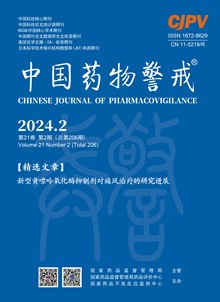|
|
Safe doses of Lingyang Ganmao oral liquid for children based on the multi-animal model
SUN Qiyue, ZHAO Ronghua, BAO Lei, GUO Shanshan, GENG Zihan, LI Shuran, XU Yingli, ZHANG Jingsheng, CUI Xiaolan, SUN Jing
2024, 21(2):
121-126.
DOI: 10.19803/j.1672-8629.20230388
Objective To determine the effectiveness and range of optimal dosages of Lingyang Ganmao oral liquid for children, and to provide reference for medication in children. Methods Based on multi-animal models, five corresponding young animal models that targeted the major properties were used, including the mouse pneumonia model caused by influenza A (H1N1) virus infection, the mouse acute inflammation model for increased permeability of abdominal capillaries caused by glacial acetic acid, the mouse cough model caused by ammonia nebulization, the mouse pain model caused by glacial acetic acid and the rabbit fever model caused by lipopolysaccharide (LPS). To observe the antiviral, anti-inflammatory, antitussive, analgesic and antipyretic efficacy of Lingyang Ganmao oral liquid in six dosage groups, namely 0.1, 0.2, 0.4, 0.6, 0.8 and 1.0 mL·kg-1·d-1 for human use (children's dosage).The animal dosages were calculated using the body surface area conversion formula, based on the human dose. For mice, the dosages were 1, 2, 4, 6, 8, and 10 mL·kg-1·d-1, while for rabbits, the dosages were 0.3, 0.6, 1.2, 1.8, 2.4, and 3.0 mL·kg-1·d-1. The results are used to determine the optimal dose range for children. Results Lingyang Ganmao oral liquid could reduce lung indexes, inhibit capillary permeability, reduce the number of times mice coughed and writhed and help lower the body temperature of rabbits. The doses of stable efficacy ranged from 4.0 to 8.0 mL·kg-1·d-1 and from 1.2 to 2.4 mL·kg-1·d-1, respectively, which were equivalent to 0.4-0.8 mL·kg-1·d-1 for human use. Conclusion Lingyang Ganmao oral liquid produces stable and effective antiviral, anti-inflammatory, anti-cough, analgesic and antipyretic effects within the dose range of 0.4 to 0.8 mL·kg-1·d-1. The recommended dosage is 5mL each time and 1-2 times daily for children ages 1 to 3, 5mL each time and 1-3 times daily for those ages 4 to 6, and 5mL each time and 2-4 times daily for those between 7 and 12.
References |
Related Articles |
Metrics
|
